#USS Tennessee (SSBN-734)
Text
Chinese president urged military to prepare for war with ‘declining’ West – media
Xi Jinping reportedly warned in 2020 that a regional conflict could spiral out of control
hinese President Xi Jinping told military leaders at a meeting in 2020 that with his country “rising” and the West “declining,” Beijing needed to prepare for a war between both sides, Japan’s Kyodo News reported on Monday.
Citing documents from a December 2020 meeting between Xi and the Chinese Communist Party’s Central Military Commission, the Japanese outlet claimed that Xi declared “the East is rising and the West is declining.”
Russia’s and China’s joint military drills in Asia are making the Pentagon very nervous
Russia and China are stepping up joint military drills in Asia and the Pacific — and their moves are starting to alarm the Pentagon.
On Sunday, Beijing and Moscow completed a massive air and naval exercise in the Sea of Japan, including anti-submarine missions, sea-and-air escort training, and combat games, according to Chinese state media. Leaders said the practice runs were focused on “safeguarding” the region’s maritime transportation — possibly a mocking reference to language Biden administration has used to justify its own growing military presence in the South China Sea and Taiwan Strait.
The US has sent the nuclear-powered submarine USS Tennessee with 20 Trident II intercontinental ballistic missiles with a launch range of more than 12,000 kilometres to the UK
The US Navy has been revealing the location of strategic nuclear submarines that carry nuclear weapons with unexpected frequency over the past year. One of the Ohio class submarines has arrived in the UK.
In July, the USS Tennessee, bearing the submarine number (SSBN-734), anchored off the coast of Scotland. The submarine was visited by the head of the British Submarine Force, Commodore Paul Dunn, and the commander of European Command, US Army General Christopher Cavoli.
14 notes
·
View notes
Text
State Ship Series: USS Tennessee
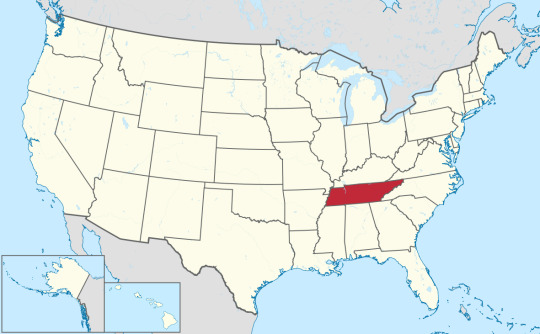
There has been six ships commissioned named after the state of Tennessee in the US Navy. The state was admitted into the United States on June 1, 1796.
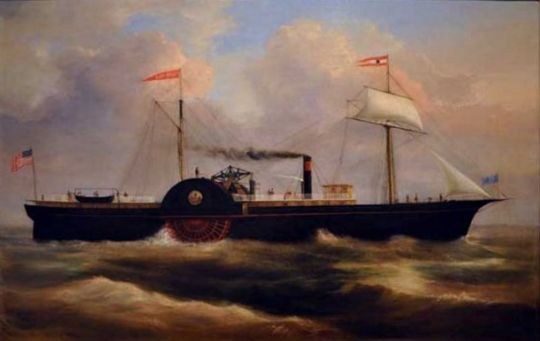
USS Tennessee (1853), side-wheel steamer, in commission from 1862 to 1865. Originally SS Republic, captured by the Confederate in 1862 and renamed CSS Tennessee. Later that year, captured by the Union and commissioned. Renamed USS Mobile.
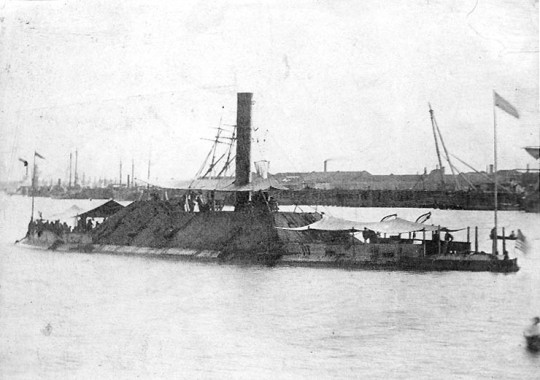
USS Tennessee (1863), casemate ironclad, in commission from 1864 to 1865. She was originally CSS Tennessee and was captured by Union during the Battle of Mobile Bay. She participated in the Siege of Fort Morgan. Scrapped in 1867.
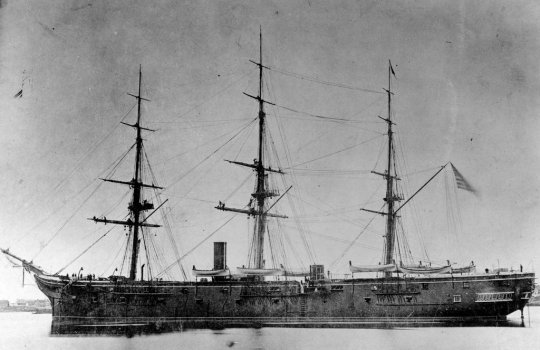
USS Tennessee (1865), Wampanoag class, screw frigate, in common from 1867 to 1886. Originally named USS Madawaska, renamed USS Tennessee in 1869. "In The Steam Navy of the United States, Frank M. Bennet relates that during the time Tennessee was flagship of the North Atlantic Squadron she was 'the largest vessel then in commission in the American Navy, and the era of mastless steel cruisers was yet so far away that she was not suspected, by the youngsters at least, of being obsolete and stood as the type of all that was excellent and majestic in ship construction.' Her spaciousness and the comfort of her quarters as well as her handling characteristics made her a favorite duty station."

USS Tennessee (ACR-10), Tennessee class, Armored Cruiser, in commission from 1906 to 1917. Renamed USS Memphis in 1916 to free the name for BB-43. She was lost on August 29, 1916 in San Diego Harbor when 70 to 100 ft (21 to 30 m) waves started slammed into her. She was rolling 45°, water entered through her gun ports and funnels. This put out the fire in her boilers and losing steam. Over the next hour and a half, she was slammed against the harbor floor and pushed up onto the beach. 43 men were killed or missing and 204 injured. Deemed a total loss as she had suffered the destruction of her propulsion plant and severe distortion of her hull structure. She was salvaged for her guns and other equipment and scrapped from 1922 to 1938.
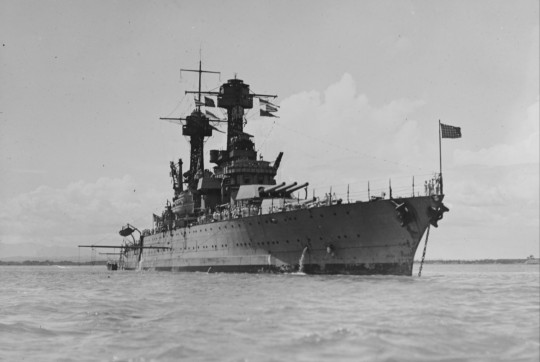
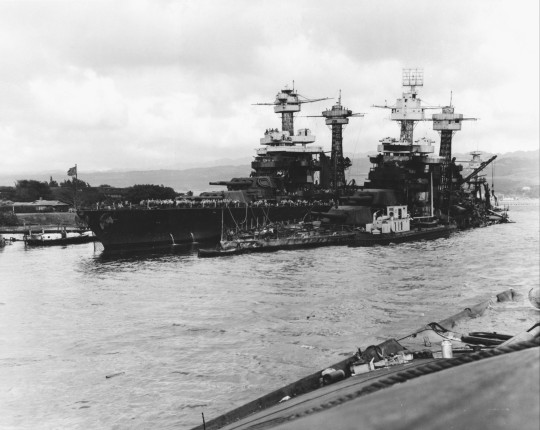

USS Tennessee (BB-43), Tennessee Class, Dreadnought Battleship, in commission from 1920 to 1947. She was part of the "Big 5", the group that consisted of the the most modern battleships of the interwar period. The group compromised of the Tennessee class and Colorado class. Survived the Japanese surprise attack on Pearl Harbor, being hit by two bombs, one of which was the same as the one that destroyed USS Arizona. Luckily, it was a dud. She was protected from torpedoes by being inboard of USS West Virginia. She was pulled from her mooring after USS Maryland was freed. Quickly repaired and went on patrols in 1942. She went back to the yard to be completely rebuilt and modernized from late 1943 to 1944. She fought in the Aleutian Islands Campaign, Gilbert and Marshall Islands campaign, Battles of Tarawa, Battle of Kwajalein, Battle of Eniwetok, Mariana and Palau Islands campaign, Battles of Saipan, Battle of Guam, Battle of Tinian, Battle of Angaur, Philippines campaign, Battle of Leyte, Battle of Surigao Strait (the last battleship engagement), invasion of Iwo Jima, and invasion of Okinawa. She took a kamikaze hit at Okinawa. She earned ten battle stars during WWII. Placed in reserves in 1947, she was scrapped in 1959. Rumor has it the citizens of Tennessee wanted her as a museum ship but the Mississippi river was not deep enough for the battleship to make it.
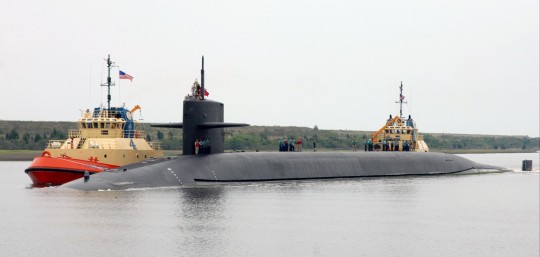

USS Tennessee (SSBN-734), Ohio class, nuclear powered ballistic missile submarine, in commission from 1988 to present.
NHHC: NH 99943, NH 51951, NH 42390, NH 2230
NARA: 306536
source, source, source
#Tennessee#State Ship Series#USS Tennessee#USS Tennessee (1853)#side-wheel steamer#USS Tennessee (1863)#casemate ironclad#USS Tennessee (1865)#Wampanoag class#screw frigate#USS Madawaska#USS Tennessee (ACR-10)#Tennessee class#Armored Cruiser#Cruiser#USS Memphis#USS Tennessee (BB-43)#dreadnought#battleship#USS Tennessee (SSBN-734)#Ohio Class#ballistic missile submarine#submarine#united states navy#us navy#navy#usn#u.s. navy#my post#June
15 notes
·
View notes
Photo

USS Tennessee (SSBN-734) in drydock at Kings Bay submarine base
6 notes
·
View notes
Photo



Trump Targets California With “Game Changer” City Block Nuke Missile Test
By: Sorcha Faal
A foreboding new Ministry of Defense (MoD) report circulating in the Kremlin today examining findings related to the long-duration Tu-160 strategic nuclear armed bombers over flights of the Arctic, notes these flight crews having registered an unannounced ballistic missile test firing from within this region on 29 January—a test firing preceded by an alert message emanating from the United States Navy Ohio-Class ballistic missile submarine USS Tennessee (SSBN-734), that left its homeport at Naval Submarine Base Kings Bay in Georgia-USA in late December-2019 to begin patrol exercises in Arctic waters—and was a test seeing this submarine launching a ballistic missile using the North Pole route to reach its State of California target destination, where upon reentering the atmosphere, its streaking through the sky caused concerns among this State’s citizens unknowing of what was occurring—but instead of these American citizens being concerned about this missile’s reentry into their skies, should more rightly see them becoming panicked—because, for the first time in history, the USS Tennessee set sail with the “Game Changing” new and controversial low-yield W76-2 nuclear warhead—a warhead that detonates on the ground to create a fireball just over 490-feet wide, wherein everything is incinerated—which designates it as a type of “city block” weapon device unsuitable for nuclear armed great-nation warfare—as in this type of warfare, nuclear weapons would vaporize entire cities and large-scale military bases—thus leading to the question as to whom President Donald Trump, who ordered this nuclear weapon to be rapidly developed and deployed, is intending to use it against.
The official logo for the W76-2 low-yield nuclear weapon (above). Mk4A refers to the reentry vehicle that carries the warhead.
A comparison of how Washington, D.C. might be impacted by the detonation of, from left to right, a 475 kiloton W88 nuclear warhead, a 100 kiloton W76-1 and a 5-7 kiloton low-yield W76-2.
According to this report, near exactly one year ago, in January-2019, it was announced that President Trump’s new low-yield nuclear weapon had entered production—an announcement which led to MoD intelligence analysts compiling an extensive document in which the historical basis for the American’s creation of this type of new weapon was examined—an examination that revealed the United States and its peoples are the most violent society ever witnessed in modern times—and has been at war for 225 years out of its 242-year-old history.
With the United States, in fact, being founded by its Revolutionary War, this report notes, its greatest loss of life conflict was its own domestic Civil War—a conflict that caused more American deaths than all of the other wars they fought combined—an expected conflict as the US has existed in a state of perpetual war with itself since its founding—which began with the Shay’s Rebellion, that occurred barely three years after their country was founded—and ever since has been followed by interspersing periods of open conflict and low-intensity warfare—an example of the later occurring on Friday when socialist ANTIFA terrorist mobs invaded the New York Transit System to confront that city’s police forces.
One of the longest examples of open conflict warfare in the United States, this report states, occurred in the period from the mid-1960’s to the mid-1980’s—a 20-year time period that saw left-wing terrorism being responsible for thousands of bombings—as well as numerous American cities being left in smoldering ruins due to mass racial warfare—the suppression of which was accomplished in 1985 when the US military devised a new tactic to end domestic uprisings—and was when the US military supplied the police department of Philadelphia-Pennsylvania with C-4 high explosives—who used them against a black communist group staging a rebellion—and in using, saw these explosives destroying 61 homes and killing all of these terrorists, including their children—a mass extermination tactic against subversives to state rule repeated in 1993 when US forces near instantly leveled a compound in Waco-Texas killing all of its in rebellion religious fanatics, including dozens of their children.
This US military mass extermination war tactic, this report details, was first deployed by them during World War II—during which it was perfected by US Air Force General Curtis LeMay whose simple philosophy of war was “If you kill enough of them, they stop fighting”—and in using, saw General LeMay’s forces obliterating hundreds of the largest cities in Germany and Japan killing tens-of-millions of civilians—after which he rightly stated: “I suppose if I had lost the war, I would have been tried as a war criminal”.
In 2016 while running to be his nation’s leader, this report points out, President Trump made numerous statements about his not ever ruling out his using nuclear weapons—and shortly after taking office in 2017, saw him going to the Pentagon to confront all of his top generals—a confrontation that saw Trump “calling these generals dopes and babies” and telling them “I want to win, I wouldn’t go to war with you people”—that was followed shortly after by Trump ordering the building of smaller nuclear weapons—an order coinciding with Trump being slammed by leftist headlines such as “One Year On, Donald Trump Is Still An Illegitimate President”—all coming at the same time he was fending off a coup d'état to overthrow him.
In a violent nation embroiled in warfare since its founding that’s seen 4 of 45 its Presidents assassinated, and another 17 of them having assassination plots launched against them, this report further notes, most perplexing is why the American people still can’t see what’s heading straight towards them—as only bloodshed is going to end the current crisis they’re in, just like has happened repeatedly throughout their entire history—a fact well known to a President Trump who’s now channeling his inner General LeMay tactic of a quick mass extermination event to end his country’s madness—and is why he’s now testing his new low-yield nuclear weapon—the detonation of which in a radical socialist California in rebellion city will immediately end this crisis.
As to any choices President Trump may have to avoid using a low-yield nuclear weapon to end the grave socialist threat against the United States, this report concludes, there are none—best exampled by the tens-of-millions of radical socialist Democrat Party followers now being told by their revered leader Hillary Clinton that “Trump is an illegitimate president”—illegitimate because Democrat Party Senate Minority Leader Chuck Schumer has just falsely claimed that no witnesses or documents were placed into evidence during the hoax impeachment trial of Trump—with Schumer being quickly joined by Democrat Party House Majority Leader Nancy Pelosi outrageously claiming that Trump cannot be acquitted, and her calling for all of Trump’s lawyers to be immediately disbarred—all of whom were followed by the leftist mainstream media crying out that “Trump is the greatest threat to election integrity” and “Trump is now a monarch king above the law”—cries of war that fully explains why top socialist Democrat Party fundraiser and media figure Bill Maher declared to this nationwide television audience a few hours ago: “I’ll tell you why Bernie Sanders is attractive to me now: because he’s the only Democrat who, like Trump, has an army…Who, when it gets to this other level, he’s got a bunch of badass motherfuckers who will get in the streets”—the same Bernie Sanders army who’ve already vowed: “If Bernie doesn’t get the nomination or it goes to a second round at the DNC Convention, fucking Milwaukee will burn”—but one would logically think these socialists’ time would be better spent reading such things like “How To Survive A Nuclear Attack: Not Everyone Has To Die If War Breaks Out”—or at the very least, them watching Trump in a few days on 4 February when he gives his nationwide State of the Union Address that will “launch an attack on the rising force of socialism” in a dire warning of what’s soon to come.
1 note
·
View note
Photo

ATLANTIC OCEAN (Feb. 6, 2013) The Ohio-class ballistic missile submarine USS Tennessee (SSBN 734) returns to Naval Submarine Base Kings Bay. Tennessee deployed for operations more than three months ago. (U.S. Navy photo by Mass Communication Specialist 1st Class James Kimber/Released)
36 notes
·
View notes
Photo

^@! USS Tennessee Submarine Navy Stretch L/XL SSBN-734 Baseball Cap Hat https://ift.tt/3l84DXx
0 notes
Photo

USS Tennessee (SSBN 734) by Military_Photos United States Navy Ohio-Class Ballistic Missile Submarine USS Tennessee (SSBN 734).
7 notes
·
View notes
Text
Pax Test Syncs Manned & Unmanned Growlers
Pax Test Syncs Manned & Unmanned Growlers
Morning Coffee is a robust blend of links to news around the internet concerning the Naval Air Station Patuxent River economic community. The opinions expressed here do not reflect opinions of the Leader’s owners or staff.
The Navy’s test wing out of NAS Patuxent River flew two unmanned E/A-18G Growlers, with a third manned fighter acting as mission control, reports C4ISRNET. The test was to…
View On WordPress
#5G#Boris Johnson#Carney#Donald Cook#E/A-18G Growlers#F/A-18 Super Hornets#Huawei#Porter#PTSD#service academies#USS hafee#USS Howard#USS James E. Willias#USS Kidd#USS Mahan#USS Oscar Austin#USS Pinckney#USS Ross#USS Stout#USS Tennessee (SSBN-734)
0 notes
Text
Pentagon confirms fielding of new nuclear weapon
The U.S. Department of Defense has officially confirmed that U.S. Navy has fielded the new W76-2 low-yield submarine-launched ballistic missile (SLBM) warhead.
The warhead is a modification of the existing W76, which is used to arm submarine-launched Trident II missiles.
The advanced W76-2 warhead was first announced in the Trump administration’s Nuclear Posture Review (NPR) unveiled in February 2018. There, it was described as a capability to “help counter any mistaken perception of an exploitable ‘gap’ in U.S. regional deterrence capabilities,” a reference to Russia. The justification voiced by the administration was that the United States did not have a “prompt” and useable nuclear capability that could counter – and thus deter – Russian use of its own tactical nuclear capabilities.
The deployment of a new nuclear weapon aboard a submarine was first reported by Jan. 29 by the Federation of American Scientists.
Last week, The Federation of American Scientists published a report detailing their belief Ohio-class ballistic missile submarine USS Tennessee (SSBN-734) left the Kings Bay Submarine Base, Ga., for a strategic deterrent patrol at the end of 2019 carrying at least one W76-2 low yield warhead on a Trident submarine-launched ballistic missile (SLBM).
“We estimate that one or two of the 20 missiles on the USS Tennessee and subsequent subs will be armed with the W76-2, either singly or carrying multiple warheads. Each W76-2 is estimated to have an explosive yield of about five kilotons. The remaining 18 missiles on each submarine like the Tennessee carry either the 90-kiloton W76-1 or the 455-kiloton W88,” wrote Hans Kristensen, the director of the Nuclear Information Project at the Federation of American Scientists.
The Defense News reported that the warhead design is a modification of the W76-1 warhead for the Navy’s Trident ballistic missile, which has allowed NNSA to quickly turn around the design since it was ordered in last year’s Nuclear Posture Review. The warhead is designed to be smaller than the weapon detonated at Hiroshima, Japan, during World War II.
from Defence Blog
The U.S. Department of Defense has officially confirmed that U.S. Navy has fielded the new W76-2 low-yield submarine-launched ballistic missile (SLBM) warhead.
The warhead is a modification of the existing W76, which is used to arm submarine-launched Trident II missiles.
The advanced W76-2 warhead was first announced in the Trump administration’s Nuclear Posture Review (NPR) unveiled in February 2018. There, it was described as a capability to “help counter any mistaken perception of an exploitable ‘gap’ in U.S. regional deterrence capabilities,” a reference to Russia. The justification voiced by the administration was that the United States did not have a “prompt” and useable nuclear capability that could counter – and thus deter – Russian use of its own tactical nuclear capabilities.
The deployment of a new nuclear weapon aboard a submarine was first reported by Jan. 29 by the Federation of American Scientists.
Last week, The Federation of American Scientists published a report detailing their belief Ohio-class ballistic missile submarine USS Tennessee (SSBN-734) left the Kings Bay Submarine Base, Ga., for a strategic deterrent patrol at the end of 2019 carrying at least one W76-2 low yield warhead on a Trident submarine-launched ballistic missile (SLBM).
“We estimate that one or two of the 20 missiles on the USS Tennessee and subsequent subs will be armed with the W76-2, either singly or carrying multiple warheads. Each W76-2 is estimated to have an explosive yield of about five kilotons. The remaining 18 missiles on each submarine like the Tennessee carry either the 90-kiloton W76-1 or the 455-kiloton W88,” wrote Hans Kristensen, the director of the Nuclear Information Project at the Federation of American Scientists.
The Defense News reported that the warhead design is a modification of the W76-1 warhead for the Navy’s Trident ballistic missile, which has allowed NNSA to quickly turn around the design since it was ordered in last year’s Nuclear Posture Review. The warhead is designed to be smaller than the weapon detonated at Hiroshima, Japan, during World War II.
via IFTTT
0 notes
Text
USS Tennessee (SSBN-734) Submarine
USS Tennessee (SSBN-734) Submarine
USS Tennessee (SSBN-734) Submarine
USS Tennessee (SSBN-734) is a United States Navy Ohio-class ballistic missile submarine that has been in commission since 1988. She is the fourth ship and first submarine of the U.S. Navy to be named for Tennessee, the 16th state. The Tennessee was the first Ohio-class submarine commissioned capable of launching the Trident II ballistic missile (D5). On 21…
View On WordPress
0 notes
Text
SSN-781 USS California Submarine Model for Sale - Squadron Nostalgia
If you are a history buff and love submarines model like SSN-781 USS California Submarine Model, SSN-688 Los Angeles Model model and USS Tennessee SSBN-734 Model model, then why go somewhere else? Squadron Nostalgia, LLC is the perfect place for you, where you can find a great collection of wooden model ships within the budget limit. So, what are you thinking? Go online and get the military ship models today!

0 notes
Text
Pentagon confirms fielding of new nuclear weapon
The U.S. Department of Defense has officially confirmed that U.S. Navy has fielded the new W76-2 low-yield submarine-launched ballistic missile (SLBM) warhead.
The warhead is a modification of the existing W76, which is used to arm submarine-launched Trident II missiles.
The advanced W76-2 warhead was first announced in the Trump administration’s Nuclear Posture Review (NPR) unveiled in February 2018. There, it was described as a capability to “help counter any mistaken perception of an exploitable ‘gap’ in U.S. regional deterrence capabilities,” a reference to Russia. The justification voiced by the administration was that the United States did not have a “prompt” and useable nuclear capability that could counter – and thus deter – Russian use of its own tactical nuclear capabilities.
The deployment of a new nuclear weapon aboard a submarine was first reported by Jan. 29 by the Federation of American Scientists.
Last week, The Federation of American Scientists published a report detailing their belief Ohio-class ballistic missile submarine USS Tennessee (SSBN-734) left the Kings Bay Submarine Base, Ga., for a strategic deterrent patrol at the end of 2019 carrying at least one W76-2 low yield warhead on a Trident submarine-launched ballistic missile (SLBM).
“We estimate that one or two of the 20 missiles on the USS Tennessee and subsequent subs will be armed with the W76-2, either singly or carrying multiple warheads. Each W76-2 is estimated to have an explosive yield of about five kilotons. The remaining 18 missiles on each submarine like the Tennessee carry either the 90-kiloton W76-1 or the 455-kiloton W88,” wrote Hans Kristensen, the director of the Nuclear Information Project at the Federation of American Scientists.
The Defense News reported that the warhead design is a modification of the W76-1 warhead for the Navy’s Trident ballistic missile, which has allowed NNSA to quickly turn around the design since it was ordered in last year’s Nuclear Posture Review. The warhead is designed to be smaller than the weapon detonated at Hiroshima, Japan, during World War II.
from Defence Blog
The U.S. Department of Defense has officially confirmed that U.S. Navy has fielded the new W76-2 low-yield submarine-launched ballistic missile (SLBM) warhead.
The warhead is a modification of the existing W76, which is used to arm submarine-launched Trident II missiles.
The advanced W76-2 warhead was first announced in the Trump administration’s Nuclear Posture Review (NPR) unveiled in February 2018. There, it was described as a capability to “help counter any mistaken perception of an exploitable ‘gap’ in U.S. regional deterrence capabilities,” a reference to Russia. The justification voiced by the administration was that the United States did not have a “prompt” and useable nuclear capability that could counter – and thus deter – Russian use of its own tactical nuclear capabilities.
The deployment of a new nuclear weapon aboard a submarine was first reported by Jan. 29 by the Federation of American Scientists.
Last week, The Federation of American Scientists published a report detailing their belief Ohio-class ballistic missile submarine USS Tennessee (SSBN-734) left the Kings Bay Submarine Base, Ga., for a strategic deterrent patrol at the end of 2019 carrying at least one W76-2 low yield warhead on a Trident submarine-launched ballistic missile (SLBM).
“We estimate that one or two of the 20 missiles on the USS Tennessee and subsequent subs will be armed with the W76-2, either singly or carrying multiple warheads. Each W76-2 is estimated to have an explosive yield of about five kilotons. The remaining 18 missiles on each submarine like the Tennessee carry either the 90-kiloton W76-1 or the 455-kiloton W88,” wrote Hans Kristensen, the director of the Nuclear Information Project at the Federation of American Scientists.
The Defense News reported that the warhead design is a modification of the W76-1 warhead for the Navy’s Trident ballistic missile, which has allowed NNSA to quickly turn around the design since it was ordered in last year’s Nuclear Posture Review. The warhead is designed to be smaller than the weapon detonated at Hiroshima, Japan, during World War II.
via IFTTT
0 notes